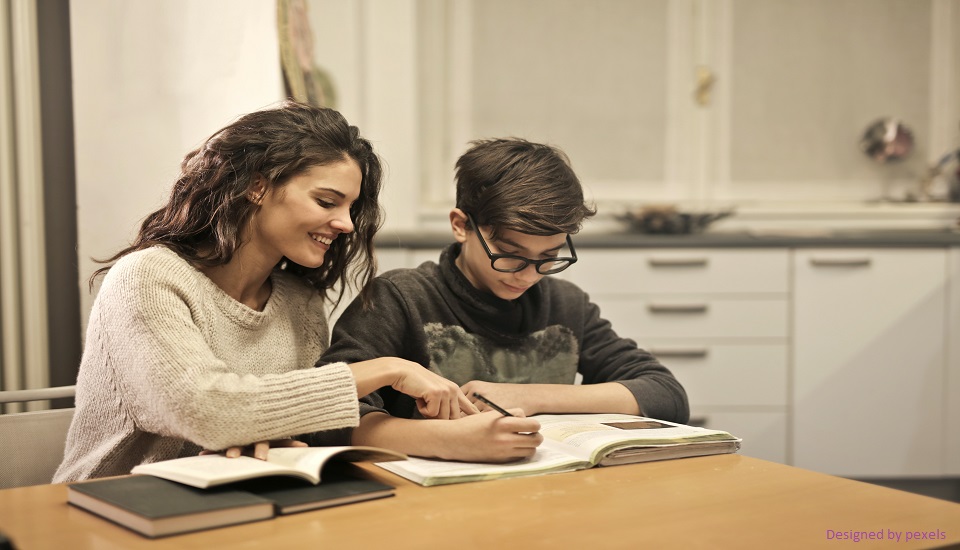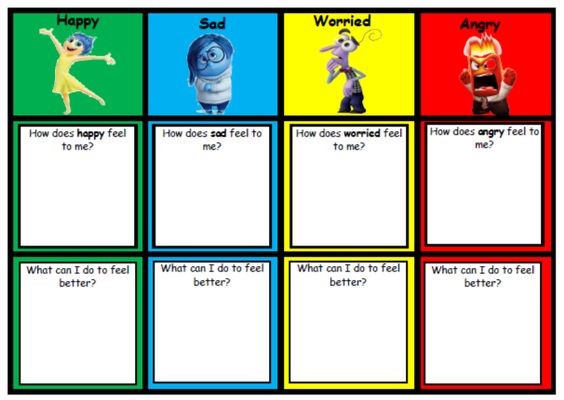3 ways to teach emotion and feelings using Disney's 'Inside Out'
19th July 2022
By now, we’ve all seen the Disney Pixar movie, Inside Out, that has inspired several to ponder over the idea of what goes on inside our brains which has a direct connection to what goes on around us on a daily basis. It encouraged young individuals and adults to talk about the feelings and emotions they go through. The movie revolves around an 11-year-old protagonist, Riley and her life that serves as a great platform and vehicle for teaching emotions to children.
Though Riley herself has minimal participation in the film, her emotions are portrayed as ‘characters’ in the movie. While the key idea behind personifying emotions into characters is quite creative and engaging, in reality, the message conveyed through the movie is that Riley’s behaviour and personality coupled with her memories are on their own journey. So basically, Riley demonstrates behavioural and traits guided by her emotions that lacks skills in communication and problem-solving areas.
As a school counsellor certified in school counselling courses, make your learners watch the movie and then ask them few questions or clear any doubts they have. But, by doing so, you can aid your learners to:
- Identify their own emotions
- Contemplate what it means for emotions to have context
- Identify and acknowledge having a range of emotions
- Connect their personal experiences with that of the movie
- Identify their perspective, and be curious about others’ perspectives
- Explore ways they identify their emotions, including somatically
- Discuss the ways they self-regulate their emotions now, and explore possibilities for other ways
- Ponder over helpful versus unhelpful responses to emotions from them and others
With that being said, the movie can also be used as a great example to develop lessons relating to social communication and social emotional learning that can help learners. Though the target audience of the movie are the young elementary school-age children, lesson ideas that follow can also be best explored with upper elementary, middle and high school students as well.
Teaching learners about emotions and metacognition at an earlier age results in higher self-regulation skills throughout their life, which in turn equals less disruptions in the classroom, easier classroom management, a safe space for young learners, and perhaps the most important of all, a well-rounded, emotionally aware individual. The same benefits are applicable to a home setting as well.
Let’s meet with the characters and their aspects, rather the emotions that are up in Riley’s brain:
Joy
- Joyful
- Interested
- Playful
- Confident
- Loving
- Sensitive
- Courageous
- Hopeful
Sadness
- Sad
- Bored
- Sleepy
- Unhappy
- Ignored
- Guilty
- Lonely
- Alone
Surprised (Bing Bong)
- Startled
- Confused
- Amazed
- Excited
- Shocked
- Astonished
- Eager
- Dismayed
Anger
- Mad
- Jealous
- Embarrassed
- Furious
- Irritated
- Withdrawn
- Sceptical
- Frustrated
Disgust
- Awful
- Disappointed
- Hesitant
- Revolted
- Loathing
- Judgemental
Fear
- Humiliated
- Rejected
- Worthless
- Insecure
- Anxious
- Scared
These are pretty much the entangled lot up in Riley’s ‘head’quarter and their features. So, what feelings and emotions are your young learners going through today?
After a detailed explanation and drill of these emotions, ask your learner to do a simple exercise.
Brainstorm
At the top of a page, write “I feel joy when….” and ask your learner to draw or write down what they think. Additionally, ask them to enact the emotion. Here is a lay-out for the activity:

After getting to know these emotions, ask your learners to identify the way they are feeling each day. You can achieve this by printing out the chart and having learners write the necessary info. It’s absolutely okay if they choose more than one. The important thing is to ask why they are undergoing that particular emotion. Once your students display proficiency at recognizing the primary emotions in themselves and starts applying on a daily basis, you can move on to secondary emotions.
Initiating communication to share ideas
In the movie, we can see Riley is dealing with change. Her family has to move to a new town and she is not okay with it. She is experiencing sadness regarding what she is leaving behind. Riley’s parents try to be upbeat, but Riley feels differently. Initiate conversation in the classroom, such as:
- What could Riley possibly say to let her parents know what she is experiencing?
- When is the right time to say it?
- How could she say it?
- Would it help her if she says it?
Exploring inner speech
In the movie, Riley seems to be quiet throughout as the real action is taking place inside her brain. How could she use her ‘inner speech’ (or a monologue) to help organize her own thinking and make sense of her emotions?
Learning to use ‘self-talk’ is a valued strategy that can help anyone throughout life. Some of the many ways we use our ‘that voice in the brain’ includes:
- helping us better understand our feeling
- reflecting on memories
- figuring out what is happening around us
- working through what to do next
It is vital to remember to acknowledge your learners’ response when they share their emotions with you. As a school counsellor adept at school counselling techniques, it is known that it is often scary being vulnerable when sharing difficult emotions. Ensure saying things such as, ‘I hear you’, ‘I get it’ and, ‘It’s okay to feel so’. You can also use empathetic sentences like, ‘It’s difficult to feel that way’, ‘I feel that way too’ etc. as a teacher, you can try using this as a platform for teaching young learners how to make themselves feel better. Let them answer at will to ‘what do you want to do to feel better?’ The answer could be things like a warm hug, encouragement from a parent, or checking in with a friend. This way, you will also be teaching them coping skills so they can learn to control their emotions.
To round it off, Pixar’s ‘Inside Out’ teaches each one of us that every emotion, no matter how uncomfortable it may be, is crucial to us. All of our emotions are pertinent, including sadness as well. On days when learners are experiencing difficult emotions, let them know that these emotions are important and temporary!
Written By : Ipsita Roy